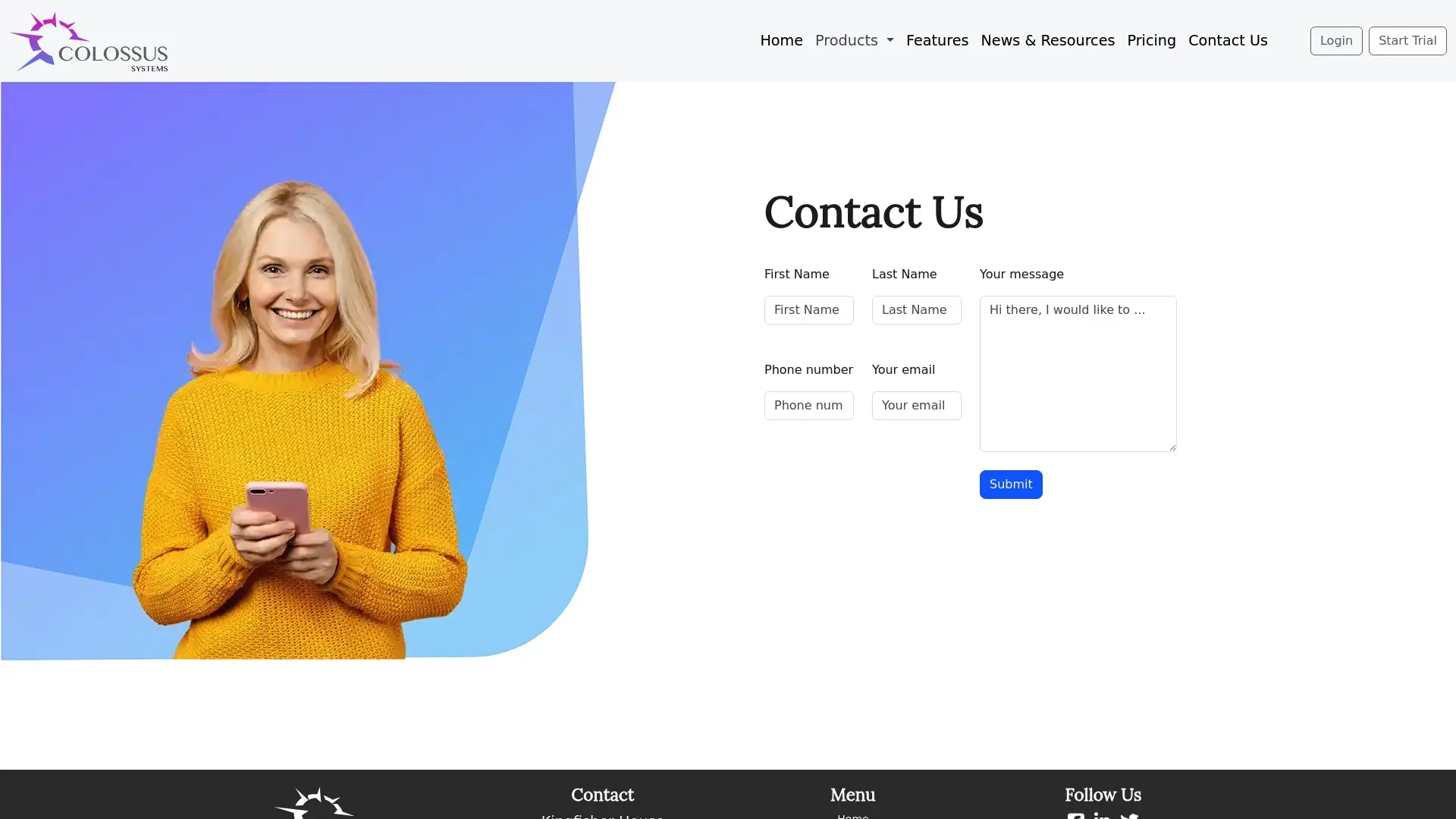Benefits of Cloud Technology: Complete Guide for 2024

More than 90 percent of british organisations have adopted some form of cloud technology in recent years. This transition is reshaping how businesses handle data, support members, and compete in a fast-changing marketplace. Understanding the fundamentals of cloud technology helps membership groups make smarter decisions, improve collaboration, and achieve greater flexibility while staying secure and cost-efficient.
Table of Contents
- Understanding Cloud Technology Fundamentals
- Types of Cloud Solutions for Organisations
- Key Benefits for Membership Management
- Security, Compliance, and Privacy Considerations
- Cost Efficiency and Scalability Insights
- Comparing Cloud Technology with Traditional IT
Key Takeaways
| Point | Details |
|---|---|
| Transformative Potential of Cloud Technology | Cloud technology revolutionises how organisations manage digital resources, enabling greater flexibility, scalability, and operational efficiency. |
| Diverse Service and Deployment Models | Understanding and selecting the right service (IaaS, PaaS, SaaS) and deployment model (Public, Private, Hybrid, Multi-Cloud) is crucial for organisations to tailor solutions that meet their specific needs. |
| Robust Security and Compliance Strategies | Effective security measures, including encryption and access management, are vital to protect sensitive data in cloud environments, alongside regular compliance auditing. |
| Cost Efficiency and Scalability | Cloud solutions facilitate significant cost savings and allow for dynamic resource scaling, enabling organisations to align technological investments with operational demands. |
Understanding Cloud Technology Fundamentals
Cloud technology represents a transformative approach to computing that fundamentally changes how organisations store, access, and process digital information. According to blp, cloud computing provides flexible infrastructure that enables businesses to scale technological resources dynamically without significant upfront hardware investments.
Cloud infrastructure operates through sophisticated virtualization techniques that allow multiple computing environments to exist simultaneously on shared physical hardware. As detailed by mrcet, these virtualization strategies permit organisations to maximise computational efficiency while reducing physical infrastructure requirements. Key characteristics of cloud technology include:
- Rapid resource provisioning
- Scalable computing power
- Pay-as-you-use pricing models
- Geographic flexibility
- Enhanced redundancy and disaster recovery capabilities
The primary service models in cloud technology encompass three fundamental approaches. Infrastructure as a Service (IaaS) provides raw computing infrastructure, Platform as a Service (PaaS) offers development environments, and Software as a Service (SaaS) delivers complete application solutions. Each model serves different organisational needs, allowing businesses to select precisely the technological support required for their specific operational contexts.
Security remains a critical consideration in cloud computing environments. Modern cloud platforms incorporate robust encryption, multi-factor authentication, and comprehensive access management protocols to protect sensitive organisational data. By understanding these fundamental principles, membership organisations can strategically leverage cloud technologies to streamline operations, enhance collaboration, and drive technological innovation.
Types of Cloud Solutions for Organisations
Organisations today have multiple cloud deployment models that enable sophisticated technological strategies tailored to specific operational requirements. According to hyetech, emerging cloud solutions are increasingly sophisticated, incorporating advanced technologies like AI-native architectures and edge-first security frameworks that provide unprecedented computational flexibility.
The primary cloud deployment strategies encompass four fundamental approaches:
- Public Cloud: Shared infrastructure managed by third-party providers
- Private Cloud: Dedicated infrastructure for single organisational use
- Hybrid Cloud: Combined public and private cloud environments
- Multi-Cloud: Utilising multiple cloud providers simultaneously
Each deployment model offers unique advantages for different organisational contexts. Public cloud solutions provide cost-effective scalability, while private clouds deliver enhanced security and customisation capabilities. datacamp highlights that hybrid and multi-cloud strategies are increasingly popular among enterprises seeking to balance performance, cost, and risk management.
Modern cloud solutions also incorporate advanced features like serverless architectures, which allow organisations to execute code without managing underlying infrastructure. These innovative approaches enable membership organisations to dynamically allocate computational resources, reduce operational overhead, and focus on core strategic objectives. By understanding and strategically implementing appropriate cloud solutions, organisations can transform their technological capabilities and drive meaningful operational efficiencies.

Key Benefits for Membership Management
Cloud technology has revolutionised membership management by providing unprecedented flexibility and operational efficiency. According to blp, cloud computing enables organisations to scale resources dynamically, transforming how membership-based groups manage their operations and engage with members.
The primary benefits of cloud technology for membership management include:
- Scalable Infrastructure: Instantly adjust computational resources
- Remote Accessibility: Enable members to access services from anywhere
- Cost Efficiency: Reduce hardware and maintenance expenses
- Enhanced Data Security: Implement robust protection mechanisms
- Real-time Collaboration: Support seamless communication channels
Hyetech highlights that modern cloud solutions provide flexible infrastructure that supports sophisticated integration capabilities. This allows membership organisations to connect various applications, streamline administrative processes, and create more personalised member experiences.
Moreover, cloud technologies enable advanced data analytics, helping organisations understand member behaviours, preferences, and engagement patterns. By leveraging membership management software, organisations can develop targeted strategies, improve retention rates, and deliver more value to their members. The ability to collect, analyse, and act on real-time data represents a significant competitive advantage in today’s dynamic membership landscape.
Security, Compliance, and Privacy Considerations
Cloud security has become increasingly complex in modern technological landscapes, requiring sophisticated strategies to protect sensitive organisational data. Arxiv highlights the critical importance of robust security frameworks, especially in multi-cloud environments where containerization introduces unique vulnerability challenges.
Key security considerations for cloud deployments include:
- Encryption Protocols: Implementing end-to-end data protection
- Access Management: Strict authentication and authorisation controls
- Continuous Monitoring: Real-time threat detection systems
- Data Segregation: Ensuring complete isolation of sensitive information
- Compliance Auditing: Regular comprehensive security assessments
According to Arxiv, emerging technologies like AI, IoT, and Blockchain are transforming cloud security paradigms, introducing more sophisticated approaches to privacy and compliance management. These advanced technologies enable organisations to develop more granular, intelligent security mechanisms that can adapt to evolving digital threats.
Effective cloud security extends beyond technological solutions, requiring comprehensive online payment security strategies. Organisations must develop holistic approaches that combine technological safeguards, employee training, and proactive risk management. By integrating advanced security protocols, membership organisations can create resilient digital ecosystems that protect member data while maintaining operational flexibility and technological innovation.
Cost Efficiency and Scalability Insights
Cloud computing has dramatically transformed how organisations manage technological resources, offering unprecedented financial flexibility. According to snscourseware, modern cloud solutions provide organisations with dynamic resource allocation strategies that significantly reduce traditional infrastructure expenditures.
Key cost efficiency mechanisms include:
- Pay-as-You-Go Models: Eliminate upfront hardware investments
- Resource Optimisation: Dynamically adjust computational capacity
- Reduced Maintenance Expenses: Minimise internal IT infrastructure costs
- Predictable Budgeting: Transparent and consistent technological spending
- Rapid Scaling: Instantaneous resource adjustment without capital expenditure
Arxiv highlights how computational advancements have revolutionised scalability, enabling organisations to respond instantly to changing operational demands. This flexibility allows membership organisations to grow or contract their technological infrastructure without significant financial risk, transforming traditional capital expenditure models.
By leveraging membership management software, organisations can implement sophisticated cost management strategies that align technological investments directly with organisational growth trajectories. The ability to scale resources precisely, coupled with transparent pricing models, represents a fundamental shift in how membership-based groups approach technological investment and operational efficiency.
Comparing Cloud Technology with Traditional IT
Digital infrastructure has undergone significant transformation, with cloud technology fundamentally challenging traditional IT approaches. According to ijfmr, the shift from on-premises systems to cloud-based architectures represents a profound paradigm change in technological resource management.
Key comparative dimensions between cloud and traditional IT include:
- Capital Investment: Cloud minimises upfront hardware expenses
- Scalability: Instant resource adjustment versus rigid infrastructure
- Maintenance: Reduced internal IT management requirements
- Accessibility: Global, device-independent access
- Update Mechanisms: Automatic system upgrades versus manual interventions
Arxiv highlights the evolutionary progression of computing systems, demonstrating how cloud technologies offer more flexible, responsive infrastructures compared to conventional IT models. Traditional approaches often require significant lead times for infrastructure changes, whereas cloud platforms enable organisations to adapt technological capabilities almost instantaneously.
By leveraging membership management software, organisations can transition from legacy systems to more dynamic, cost-effective technological ecosystems. This transformation enables membership groups to focus on core strategic objectives rather than managing complex technological infrastructure, representing a fundamental shift in organisational technological strategy.
![]()
Unlock the Full Potential of Cloud Technology for Your Membership Organisation
The article highlights the challenges membership organisations face such as achieving scalable infrastructure, ensuring robust data security, and streamlining complex administrative tasks through cloud technology. If you are feeling overwhelmed by managing member engagement, event planning, and secure online payments while trying to grow your organisation, you are not alone. With cloud computing’s promise of flexible resource provisioning and seamless integration, you can transform these challenges into opportunities for growth and efficiency.
Colossus Systems is purpose-built to help membership organisations overcome these pain points with a single unified SaaS platform tailored to your exact needs. By leveraging powerful cloud-based tools for membership management, virtual events, CRM and secure payment processing, you can unlock real-time collaboration and advanced analytics while reducing operational overhead. Our highly customisable platform lets you scale your technology alongside your organisation’s growth without the usual headaches and capital costs.
Discover how to make cloud technology work for you and revolutionise how you engage with your members today.

Experience a smarter way to manage and grow your membership organisation by contacting Colossus Systems now. Visit Contact Us to get personalised support and start your journey to enhanced member engagement. Explore how our membership management software can simplify your operations and boost your responsiveness. Don’t wait to realise the cost savings, scalability, and security that cloud technology offers — take action today and elevate your organisation’s potential.
Frequently Asked Questions
What are the key benefits of using cloud technology?
Cloud technology offers several benefits including scalable infrastructure, remote accessibility, cost efficiency, enhanced data security, and real-time collaboration capabilities, enabling organizations to manage their operations more effectively.
How does cloud technology improve membership management?
Cloud technology enhances membership management by allowing organizations to scale resources dynamically, streamline administrative processes, and utilise advanced data analytics to understand member behaviours, leading to improved member engagement and retention.
What are the different types of cloud deployment models?
The primary cloud deployment models include Public Cloud, Private Cloud, Hybrid Cloud, and Multi-Cloud. Each model has unique advantages tailored to different organizational needs, such as cost-effectiveness in public clouds or enhanced security in private clouds.
How does cloud technology compare to traditional IT systems?
Cloud technology minimises upfront hardware expenses and offers instant scalability compared to traditional IT systems, which often require significant capital investment and rigid infrastructure. Additionally, cloud solutions provide automatic system updates and remote accessibility, allowing for greater operational flexibility.